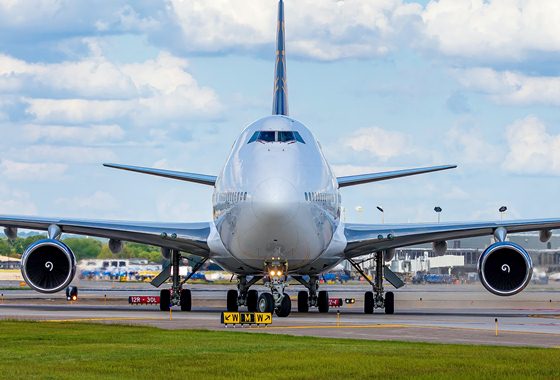-
Average Asia outbound airfreight rates are on a pronounced sequential upswing heading into peak season, according to Stifel
-
The Baltic Airfreight Indices for Hong Kong to Europe and North America were up 66% and 85% year-over-year, respectively, and up 21% and 13% since August
-
In September, the Shanghai Pudong to Europe basket rose 73% year-over-year and 38% since this August
-
The Shanghai to North America Basket climbed an astonishing 116% versus September 2020 and 40% since August
-
Most of the major trade lanes such as trans-Pacific, Asia-Europe and trans-Atlantic will be impacted by further rate increases in the fourth quarter, according to Maersk
The last quarter of 2021 is emerging as one of the strongest peaks the airfreight industry has seen, as desperate shippers, including the largest retailers, look to airfreight to transport their goods amid the sustained supply chain disruption.
According to Bruce Chan, a director and senior analyst for brokerage and investment banking Stifel, average Asia outbound airfreight rates are on a pronounced sequential upswing heading into peak season, with the Baltic Airfreight Indices (BAI) data indicating that the upswing is happening earlier this year—and off of a higher base.
BAI for Hong Kong to Europe and North America were up 66% and 85% year-over-year, respectively, with both indices rising 21% and 13% since August, which is when the inflection began.
Out of Shanghai Pudong Airport, the numbers are even starker. In September, the Shanghai to Europe Basket rose 73% year-over-year and 38% since this August. The Shanghai to North America Basket climbed an astonishing 116% versus September 2020 and 40% since last month.
“Absolute rates on Shanghai to North America are now within spitting distance of the absolute peak in the second quarter of when the PPE surge drove air cargo rates to historical highs,” Chan said.
One of the reason for the earlier upswing, he believes, is that retailers were caught off guard by last year’s peak, which was spurred by strong demand and scarce capacity. This year, many are preparing earlier for the holidays, while trying to navigate severe and persistent supply chain disruption.
Chan said Walmart, for example, has professed to building as much inventory as it can at the end of the third quarter.
“We believe that part of that strategy involves leaning on suppliers to produce and provide the goods, but also working to secure as much transportation capacity as possible by leveraging scale, creativity, and pure dollars. The company has been buying containers, expanding its network of providers, and even chartering ships. Other retailers have been taking similar measures…especially those with deep pockets, in our view,” he added.
But while demand fundamentals are strong, and should be for at least another few quarters, supply issues aren’t getting much better, Chan said. Because of persistent COVID concerns, international passenger travel remains subdued, and with it, global belly capacity. The industry has been responding with freighter conversions, but the process will take time. Moreover, fuel costs have increased, which has put pressure on operating costs.
At the same time, ocean freight remains mired in backlog and delay even as container rates continue to rise. And the number of ships waiting for berth on the U.S. West Coast also continues to reach new peaks.
“This means that for desperate shippers, air cargo may continue to be a pressure relief valve for desperation restocking, if it can be called ‘relief’, and prices should remain elevated through the end of the year,” said Chan.
Maersk: brace for accelerated rates
Maersk in its latest Asia Pacific market update likewise said the fourth quarter is shaping up to be one of the strongest peaks for the airfreight industry, with demand surpassing 2019 levels.
New technical product launches and winter fashion products, together with continued ocean freight disruption, are expected to push demand higher even as capacity has yet to return to pre-COVID levels, the integrated shipping and transport giant said.
“Rate levels, already at all-time highs, are set to increase further in Q4. Most of the major trade lanes such as transpacific, Asia-Europe and transatlantic will be impacted,” it said.
Maersk added that it is securing commercial airlines and ad hoc charters to address capacity issues and secondary airports to help overcome COVID-19 related airport restrictions. It is also offering multimodal sea-air service to customers on the Asia-Europe trade lane to meet demand.
Here is Maersk’s forecast for some key airfreight routes in the last quarter of the year:
- Japan and Korea: Japan’s main airports including Tokyo Narita and Osaka Kansai have seen strong air cargo volumes in the last two months due to disruption in ocean shipments. South Korean airports saw 26.7% volume increase year-on-year in August, driven mostly by automotive shipments to US, China and Vietnam. As a ripple effect from additional airfreight disruption in China, rates both in Korea and Japan are increasing rapidly.
- Indonesia and Philippines: Strong export demand combined with reduced airline operations and services has resulted in tight capacity and high rates especially to US and Europe. Several airlines have reduced or cancelled flights from Jakarta. Maersk expects air capacity will be constrained for the rest of the year.
- Vietnam, Cambodia and Myanmar: Rates are high and space extremely tight in the three countries due to strong demand and cargo delays at Asia airfreight hubs, with trans-Pacific services the most critical.
Photo by Nick Morales on Unsplash





